*This article was reproduced from the autocarweekly WeChat official account.
Author: Jing Jing
I am a car media person who does not like staying in five-star hotels.
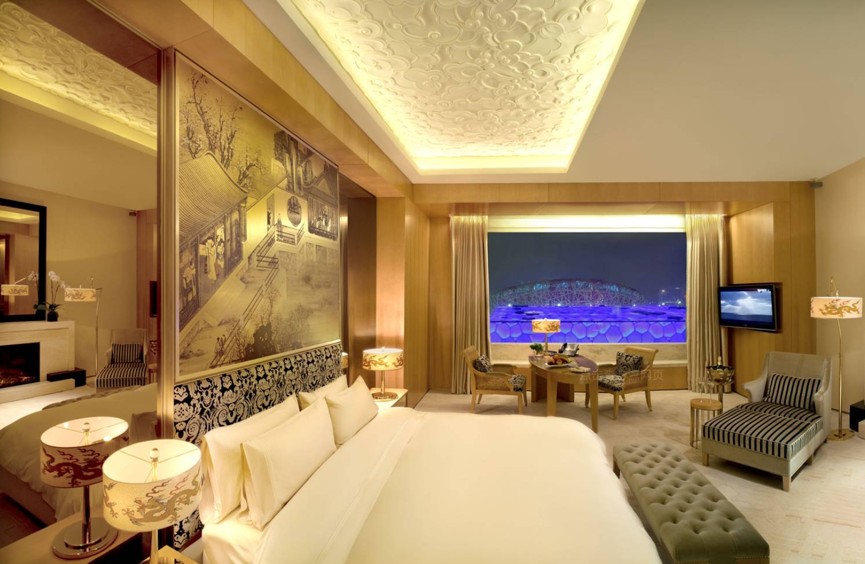
The first time I stepped into a five-star hotel, I was so excited as if I was entering the Grand View Garden. I still remember it vividly.
However, in the following years, the sense of freshness disappeared completely, and I gradually realized that the stay experience of most five-star hotels is usually characterized by large but impersonal rooms, formal yet uncomfortable tables and chairs, foreign top-brand televisions that do not support basic WiFi screen casting, over-complicated and heavy hair-dryers, complete but poorly suited cutlery and crockery, and bathtubs that are standard but lack desire in size, shape and cleanliness…
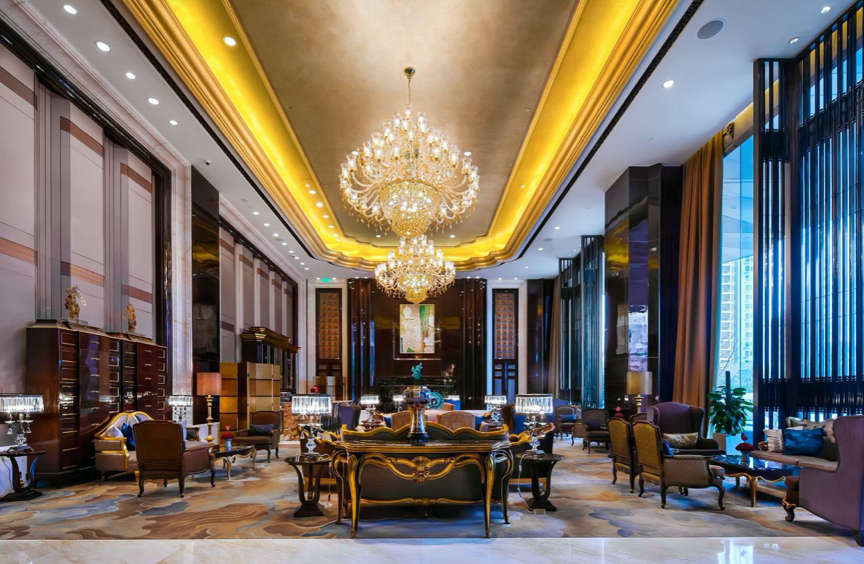
In comparison, when traveling alone, I typically opt for boutique hotels whose prices are usually less than half of five-star hotels, but whose experiential details are much better.
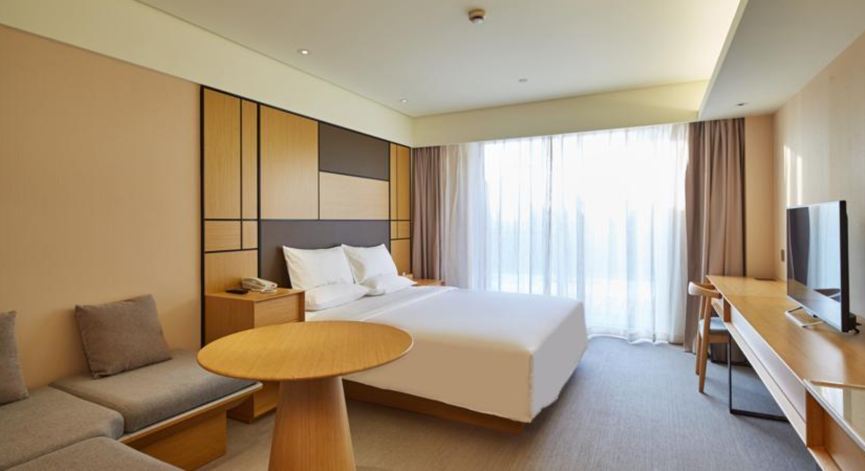
For example, the design layout of the room, with warm yellow and beige as the main color scheme, coupled with an area that is not large but cozy, and various types of furniture that are not cluttered and crowded but still fully equipped, provides a hotel experience that gives me a home-like feeling every time.
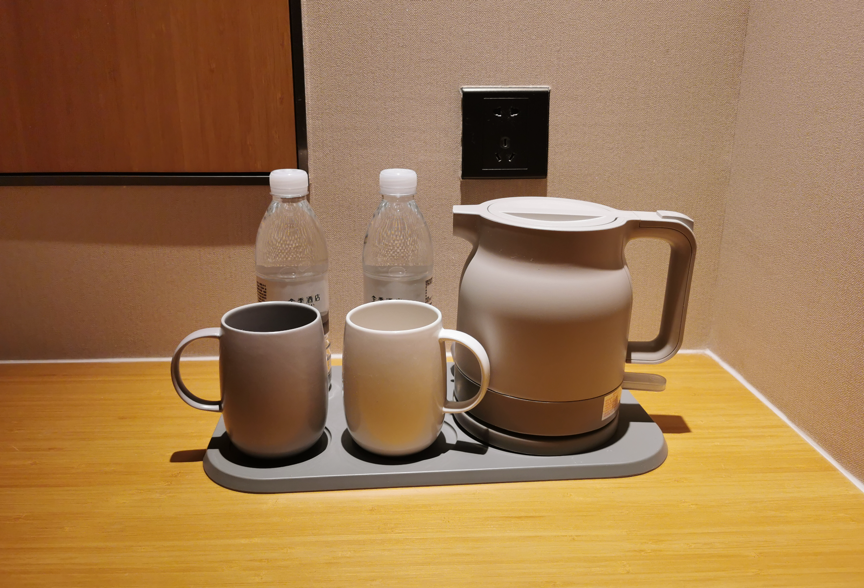
I’ll explain a few details that I particularly appreciate: There aren’t many sets of tableware in the room, just one set of water cups and one set of tea sets, all neatly placed on a tray, perfectly adequate. Even though the space is small, it accommodates both the washbasin and clothes hangers, and the open-style hangers are very handy, with surrounding mirror-front lights in front of the washbasin.
After experiencing all of these, my preference and reliance on boutique hotels has increased even more, and when I thought that all five-star hotels were overly formal, one stay at a vacation-type five-star hotel in Sanya completely changed my mind.
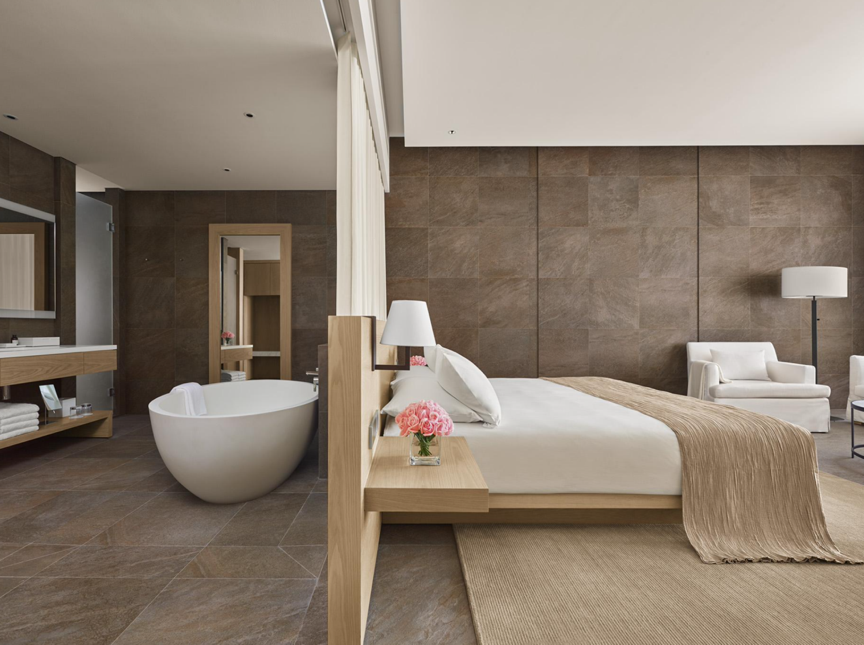 The spacious balcony overlooking the sea speaks for itself. The room is decorated with natural wood and pure white tones, creating a light, cozy, and simple ambiance. The pure white bathtub, shaped like a bowl, was the most wonderful bathing experience I’ve had to date.
The spacious balcony overlooking the sea speaks for itself. The room is decorated with natural wood and pure white tones, creating a light, cozy, and simple ambiance. The pure white bathtub, shaped like a bowl, was the most wonderful bathing experience I’ve had to date.
This made me realize that I don’t dislike 5-star hotels, but rather haven’t truly experienced a high-end 5-star hotel that combines luxury, warmth, and attention to detail. Achieving surface-level luxury through decoration is not difficult, but creating an atmosphere and experience requires a designer to truly invest their energy and creativity, as if setting up their own home.
I won’t delve into more detail about the experience, otherwise this will turn into a chain hotel advertisement. Today’s focus is on cars, but when experiencing this car, many aspects reminded me of the differences between hotels.
The luxury I’ve seen before in various traditional car giants is like the 5-star hotels I’ve stayed in over the years. However, this car, the NIO ET7, allows me to experience another level of high-end and luxury.
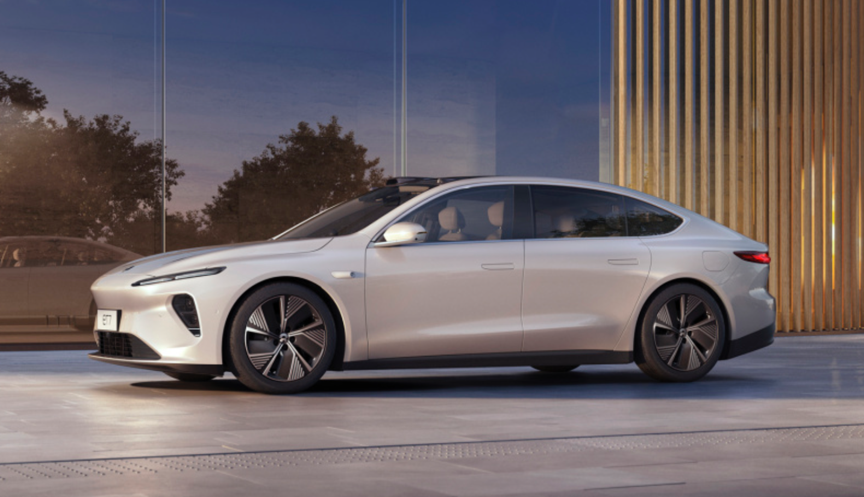
Some colleagues joked that this year’s Shanghai Auto Show should be renamed the “Shanghai New Energy Auto Show,” as almost all the noteworthy models are electric cars. At this expo, in addition to the next-generation Tesla Model S, which was absent, NIO ET7, which unveiled its interior for the first time, and the debut of the Mercedes-Benz EQS in China, were the representatives of high-end electric cars from Chinese and foreign brands.
Compared to the appearance, the interior is the core battleground showcasing high-end and luxury. For now, manufacturers have just begun exploring how to define luxury in the smart electric era. Chinese brands have also taken advantage of the opportunity to overcome their lack of historical accumulation and stand on the same starting line as global manufacturers.
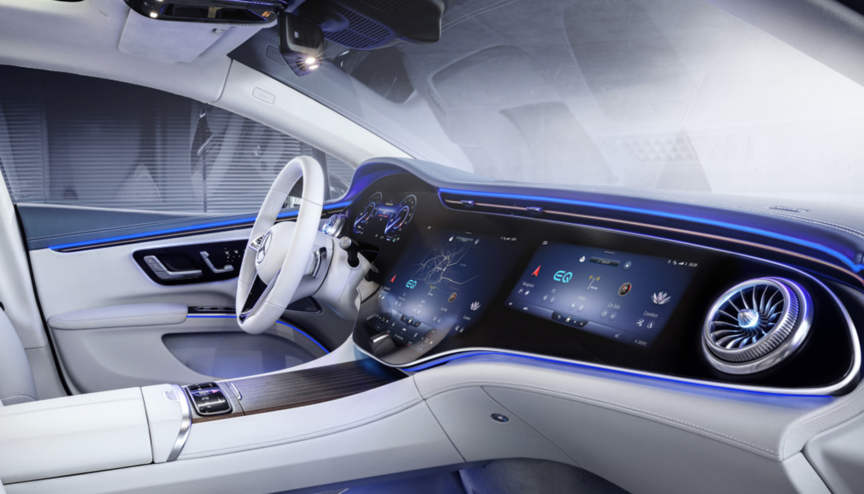
Undoubtedly, the biggest highlight of the Mercedes-Benz EQS is the super large horizontal central screen that spans the entire control panel. Although the dual-screen is a trend that Mercedes-Benz pioneered in the fuel era, the one-piece super screen of the EQS has taken Mercedes-Benz into a brand-new era.
The cabin of the EQS is impressive in terms of technology and shock value. However, if we compare it to hotels, Mercedes-Benz is the representative of traditional 5-star hotels, and EQS still follows the same style as before, making the screens in the room larger, and the electronic controls more functional. But in terms of atmosphere and living experience, there aren’t any particularly noticeable changes.Compared to other luxury cars, Tesla can be regarded as a fast hotel like 7 Days Inn, with a simple and lightweight cabin without unnecessary decoration to upgrade luxury and high-end perception, and without complicated and confusing designs both visually and functionally. Model 3 and Model Y, without gauges, could be said to be the ultimate in minimalist style.
Even the latest generation Model S still features lightweight and minimalist cabin with dashboards and leather decorations in simplest combination and arrangement.
Now, with the appearance of NIO ET7, I’m glad to see the third way, a path to present warmth, technology, and luxury jointly. The cabin is simple but not ordinary, creating a sense of future with technology.
In NIO’s design philosophy, the appearance layout is supposed to show powerful autonomous driving capability, while the interior design aims to create the space that people don’t want to get off and gradually become the “second living room” that frees up time.
Although the official interior rendering was released synchronously with the debut of the ET7, experiencing the space, light, and material interactions makes a more intuitive impression of the space and a sense of luxury. The soft and elegant theme color in the cabin, the 1.9 square meters of dome glass, brings the natural light outside into the cabin.
The round and pure separation arc line at the hidden intelligent air outlet forms the sharp and pure front view of the cabin. Pure lines taper from the open IP panel to the center control area, and then extend from the center console area to the backrest area.
For traditional luxury brands like Mercedes-Benz and Audi, the air conditioning vent is an important element to show luxury perception. By hiding this element, a simple cabin is more likely to be achieved. However, how to create a high-end atmosphere without making the cabin too monotonous becomes a challenge.
NIO design team hopes to integrate nature into the car and blend with life, adopting renewable rattan wood, Karuun, from Southeast Asia, which has unique texture and feel in each piece.
In the ET7 cabin, Karuun is applied in a total of 14 positions including the center console, central control area, door panels of front and rear, and window controls, etc. At the rear control screen, you can feel the beauty of nature anywhere in the car.This type of vine wood is used for the first time in the production of car interiors. The Micro Cloud fiber material is used on the dashboard and door panels, with 64 colors of adjustable waterfall-style ambient lighting, outlining elegant curved surfaces inside the cabin.
For example, the vine wood trim that spans the center console has variations in two angles, and the trim on the door presents gentle curves.
My personal favourite is the window control area, where the traditional style has been eliminated and replaced with a concave surface that gradually rises around the buttons, providing a palm support when operating. The innovation and design in these subtle details are stunning. Through several local designs, gentle curves or curved surface elements are present throughout the entire cabin, highlighting a smooth and high-quality texture.
In addition to that, the details that have most impressed me about the NIO ET7 are the ones that subvert traditional conventions. For example, the window control button, which used to be a button that moves up and down, has become an extremely simple metal toggle. The design and optimization of this part took more than six departments and half a year of time, even the sound of the toggle has been adjusted for several weeks.
On the interior side of the ET7’s doors, the traditional door handle has been replaced by a button embedded in the door, lightly pressing it opens the door electrically, making operation more convenient.
For instance, the interior door panels feature an obvious curved surface, paired with delicate Nappa leather wrapping, presenting a beautiful curve like a ballet dancer.
Both front and rear seats are standard with heating, ventilation, and massage functions. The rear seats are also equipped with flight headrests and longer seat cushions, providing superior leg support. Behind the rear door armrest, there is a curve extending from the armrest design, making the package more comfortable and enhancing the riding experience. Coupled with a 27° backrest angle and a large central armrest, every passenger can enjoy a comfortable ride.
Many people may overlook that even the multifunctional buttons on the steering wheel have subtle curved surface variations that complement the overall styling, giving a comfortable pressing experience. Such design is also quite exquisite.
Overall, by creating a warm basic atmosphere with a simple layout and light color scheme, every touch and sight of the cabin has been carefully polished into a comfortable curve or surface. In this kind of environment, both physically and mentally, one will inevitably enter a relaxed state without even realizing it.##
The goal of “making people not want to get off the car” has been achieved as an electric car of high-end, innovation, technology, and futurism.
In fact, technology itself has no temperature. Pursuing technology too much can easily make the cabin feel cold, as expressed by other brands.
One of the most impressive technological elements of NIO ET7 – NOMI – is actually the design in the cabin with the most warmth. As a feature across all NIO production models, NOMI remains harmonious in style in ET7, and its location has been carefully considered to take care of passengers in every position in the car.
For example, to enable NOMI to recognize the caller’s position, NIO has equipped NOMI with voiceprint recognition and the ability to distinguish sounds through four sets of microphone arrays and a dedicated NPU core. By carefully arranging the size and positions of the screen and instrument, no matter where you sit inside the car, after calling NOMI, you can make eye contact with it, just like a serious listening partner.
In fact, NOMI is not an independent device. It works together with a 10.2-inch LCD dashboard and a 12.8-inch center control screen to form a whole set of interactive systems. In the era where most electric cars have triple screens, NIO ET7 seems somewhat conservative in terms of screen size and quantity. However, this is precisely the most unique and rare attribute of NIO right now: not just blindly piling up tech elements.
This not-so-large screen has been carefully polished as well, with the narrowest edge of the frame designed to be just 5.5 mm, and a resolution of 1728 * 1888, creating a very exquisite effect when it is turned on. This ultra-narrow frame design is also the pursuit of intelligent smartphones in recent years. At the same time, the HUD head-up display with a global-first 7.1.4 immersive sound system equipped with 23 speakers comes as standard on ET7.
Technology must be people-oriented, otherwise it can easily fall into excessive pursuit of tech and gimmickry. As a family car for the second living space, ET7 is especially so, for it must prioritize comfort and enjoyment in aiming to deliver the warm and pleasant second living room that people cannot help but fall in love with, which frees up people’s time and becomes an emotional partner.According to NIO’s introduction of ET7, the spirit of this product lies in liberating time through autonomous driving to reduce accidents while creating a warm and pleasant mobile living space for a more enjoyable travel experience. However, in my opinion, the underlying product logic of ET7, and even the foundation of NIO as a company, is a phrase that everyone talks about but few really understand – “people-oriented”.
For a long time, Chinese brands have been in the stage of catching up and imitating. However, in the era of rapid development of electric vehicles and autonomous driving, Chinese brands represented by NIO have transformed into pioneers of the trend.
NIO has provided an answer for how the future car should interpret luxury.
This article is a translation by ChatGPT of a Chinese report from 42HOW. If you have any questions about it, please email bd@42how.com.